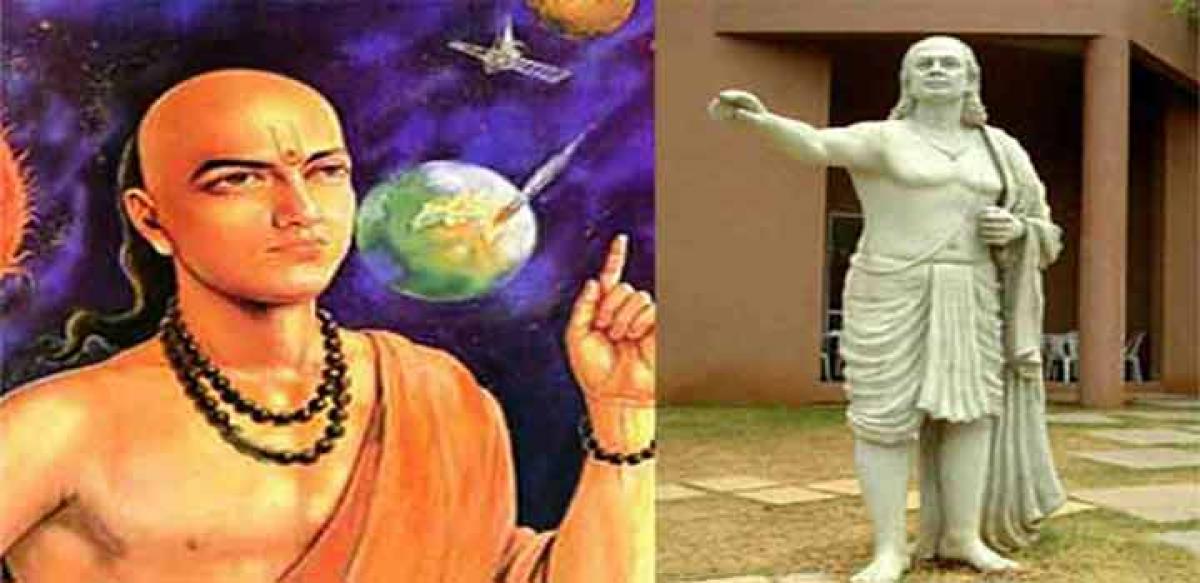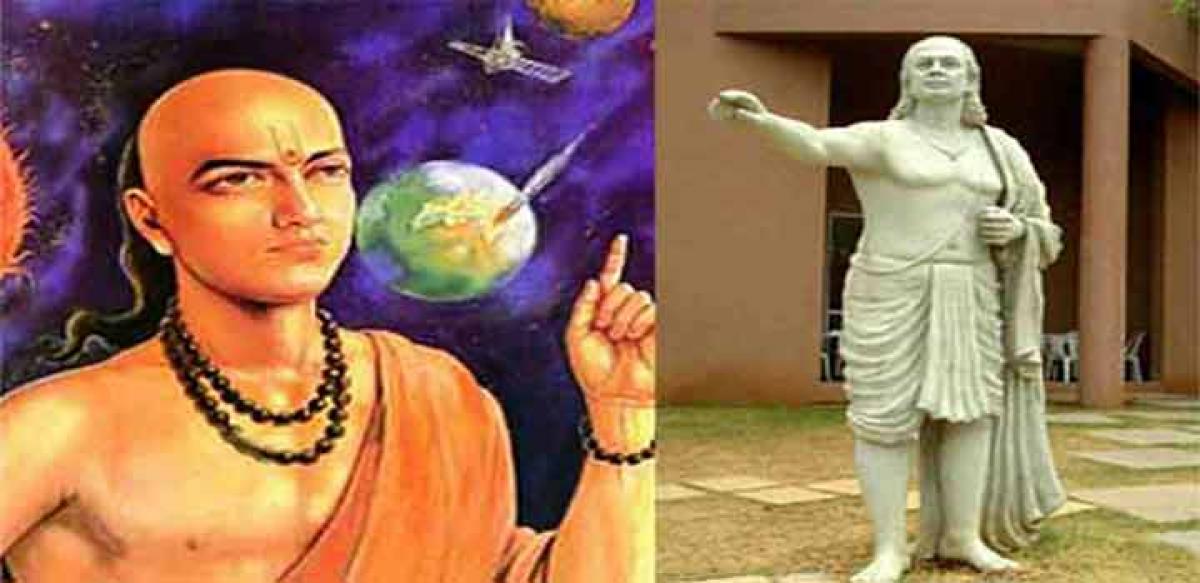Live
- Japan to strengthen measures against illegal part-time jobs
- Gahlot resignation: Delhi Congress calls AAP a sinking ship
- Consultative body on doctors' walkout fails to narrow differences in South Korea
- Honouring bravehearts: Army commemorates Nuranang Day
- 40,000 aspirants participate in army recruitment rallies across Jammu division
- Nigerian President Tinubu lauds PM Modi's efforts to amplify concerns of Global South
- Congress in Himachal to hold event in Bilaspur to mark two years at helm
- Hitaashee takes third title of the season, wins 14th leg of WPGT
- Group-3 exams in Wanaparthy district peacefully*
- Shraddha Das reigns as a fashion icon
Just In

You will be surprised to know that many theories of modern day mathematics were actually known to ancient Indians. However, since ancient Indian mathematicians were not as good in documentation and dissemination as their counterparts in the modern western world, their contributions did not find the place they deserved.
Science and Mathematics were highly developed during the ancient period in India. Ancient Indians contributed immensely to the knowledge in Mathematics as well as various branches of Science

You will be surprised to know that many theories of modern day mathematics were actually known to ancient Indians. However, since ancient Indian mathematicians were not as good in documentation and dissemination as their counterparts in the modern western world, their contributions did not find the place they deserved.
Moreover, the western world ruled over most of the world for a long time, which empowered them to claim superiority in every way, including in the field of knowledge. Let us now take a look at some of these contributions of ancient Indian mathematicians.
Baudhayan
Baudhayan was the first one ever to arrive at several concepts in Mathematics, which were later rediscovered by the western world. The value of pi was first calculated by him. As you know, pi is useful in calculating the area and circumference of a circle. What is known as Pythagoras theorem today is already found in Baudhayan’s Sulva Sutra, which was written several years before the age of Pythagoras.
Aryabhatta
Aryabhatta was a fifth century mathematician, astronomer, astrologer and physicist. He was a pioneer in the field of mathematics. At the age of 23, he wrote Aryabhattiya, which is a summary of mathematics of his time. There are four sections in this scholarly work. In the first section he describes the method of denoting big decimal numbers by alphabets.
In the second section, we find difficult questions from topics of modern day Mathematics such as number theory, geometry, trigonometry and Beejganita (algebra). The remaining two sections are on astronomy. Aryabhatta showed that zero was not a numeral only but also a symbol and a concept.
Discovery of zero enabled Aryabhatta to find out the exact distance between the earth and the moon. The discovery of zero also opened up a new dimension of negative numerals. As we have seen, the last two sections of Aryabhattiya were on Astronomy.Evidently, Aryabhatta contributed greatly to the field of science, too, particularly Astronomy. In ancient India, the science of astronomy was well advanced.
It was called Khagolshastra.Khagol was the famous astronomical observatory at Nalanda, where Aryabhatta studied. In fact science of astronomy was highly advanced and our ancestors were proud of it. The aim behind the development of the science of astronomy was the need to have accurate calendars, a better understanding of climate and rainfall patterns for timely sowing and choice of crops, fixing the dates of seasons and festivals, navigation, calculation of time and casting of horoscopes for use in astrology.
Knowledge of astronomy, particularly knowledge of the tides and the stars, was of great importance in trade, because of the requirement of crossing the oceans and deserts during night time. Disregarding the popular view that our planet earth is ‘Achala’ (immovable), Aryabhatta stated his theory that ‘earth is round and rotates on its own axis’ He explained that the appearance of the sun moving from east to west is false by giving examples.
One such example was: When a person travels in a boat, the trees on the shore appear to move in the opposite direction. He also correctly stated that the moon and the planets shined by reflected sunlight. He also gave a scientific explanation for solar and lunar eclipse clarifying that the eclipse were not because of Rahhu and/or Ketu or some other rakshasa (demon,).
Brahmagupta
In 7th century, Brahmgupta took mathematics to heights far beyond others. In his methods of multiplication, he used place value in almost the same way as it is used today. He introduced negative numbers and operations on zero into mathematics. He wrote Brahm Sputa Siddantika through which the Arabs came to know our mathematical system.
Bhaskaracharya
Bhaskaracharya was the leading light of 12th Century. He was born at Bijapur, Karnataka. He is famous for his book Siddanta Shiromani. It is divided into four sections: Lilavati (Arithmetic), Beejaganit (Algebra), Goladhyaya (Sphere) and Grahaganit (mathematics of planets).
Bhaskara introduced Chakrawat Method or the Cyclic Method to solve algebraic equations. This method was rediscovered six centuries later by European mathematicians, who called it inverse cycle. In the nineteenth century, an English man, James Taylor, translated Lilavati and made this great work known to the world.
Mahaviracharya
There is an elaborate description of mathematics in Jain literature (500 B.C -100 B.C). Jain gurus knew how to solve quadratic equations. They have also described fractions, algebraic equations, series, set theory, logarithms and exponents in a very interesting manner.
Jain Guru Mahaviracharya wrote Ganit Sara Sangraha in 850A.D., which is the first textbook on arithmetic in present day form. The current method of solving Least common Multiple (LCM) of given numbers was also described by him. Thus, long before John Napier introduced it to the world, it was already known to Indians.

© 2024 Hyderabad Media House Limited/The Hans India. All rights reserved. Powered by hocalwire.com







